In modern stores, you can find a huge selection of a variety of types of dishes made from various modern materials. A practical innovation for many houses can be called kitchen utensils from high quality plastic. All these disposable plates, forks, spoons and cups are quite comfortable in operation. It is especially comfortable to use such dishes on the outbound picnic - the items used do not need to carry home and so wash, they can be simply taken to the nearest urn to utilize the garbage.
Marking features
Marking is a specific text, as well as conditional signs or even drawn images that are put on products or on their packages. It is needed to identify a particular product or some of its qualities, carries information about the material, its properties, various characteristics of the product.
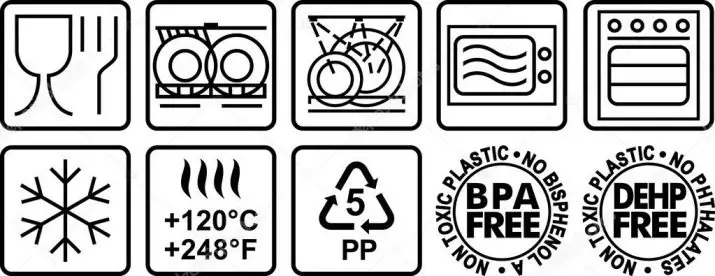
Main labeling functions:
- convey the full and most reliable information about the product to the ordinary user;
- To encourage a potential buyer to purchase this product after familiarizing with high-quality characteristics.
From the nature of the icons and various symbols, the marking is verbal and pictorial, as well as volume and spatial and mixed. The main elements of the marking are text, drawings, info.
Certain requirements are presented to product labeling:
- Information should be simplified and understandable, as well as reliable.
- The manufacturer must provide the Buyer full product information, explaining specific terms;
- It is impossible to place excess information on the product;
- Marking should not have a double meaning;
- The font size of the inscriptions or icons should be easily readable and comply with certain standards.
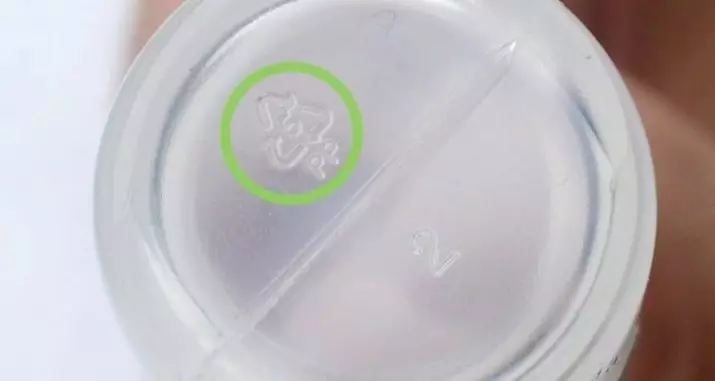
Requirements for plastic dishes
Consumer characteristics of plastic dishes affect its final choice and are considered the most significant for its operation.
- This kind of dishes should be safe when used. It is extremely important that it fully corresponds to all established hygienic and medical standards.
- An important thing is also considered the aesthetic side of the question - the dishes should be externally attractive. Nowadays, plastic sets are distinguished by a large selection of colors, the presence of stylish patterns.
- The properties of the heat resistance - the product must maintain all its qualities when contact with food and hot drinks.
- Use for various dishes, food storage capabilities in the refrigerator or freezer, as well as for use in the microwave oven.
- Increased alkali resistance, acids or fat.
- The presence of thermostatics is the ability of the consumer to keep the heated plate or a glass in the hands and do not burn.
- Elasticity. For plastic knives and forks - the ability to cut without problems and pump meals without breakdowns themselves.
- Resistance to a number of influences.
- The ability to select different shapes and parameters.
- Good capacity, compactness and ease.
- Eco-friendly component and simplified disposal.
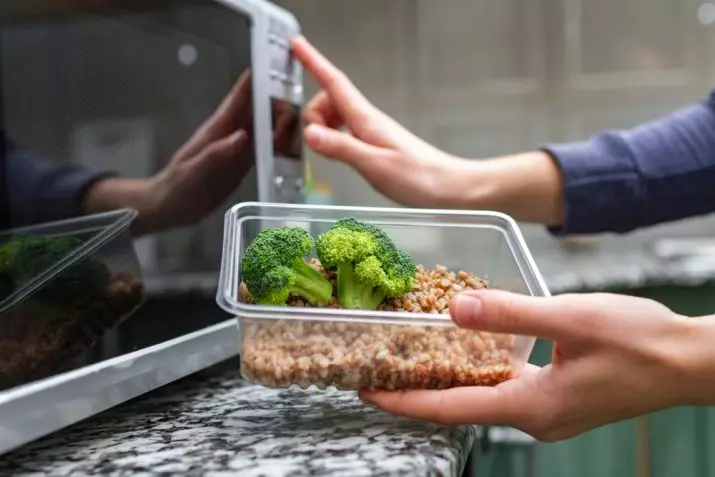
Professionals advise kitchen objects from such an unsafe material, like plastic, not to use more than 1 time - this warning refers to all the utensils from plastics. Extremely dangerous for the body of plastic capacitance becomes precisely when secondary use.
Plastic cups are better not to acquire at all, as they are at all any disposal. Moreover, the material contains a large number of toxic components that, when drinking hot drinks, will definitely find themselves in the body and cause it irreparable harm.
Always look at the labeling of plastic products offered by the companies - these detailed designations on one-time utensils will almost all be told about its operational properties. For an ordinary consumer, all kinds of disposable dishes are the same, but in fact, not every type of plastic is suitable for active operation for domestic purposes, not each of them can move heating or temperature differences.

Types of plastic
The dishes made of beautiful and durable plastic today has a very wide domestic application, which is justified by low cost and maximum comfort in operation. In most modern cafeterias, it is this kind of inexpensive dishes. Lunches, picnic kits or full dinners for the office also imply the use of edible plastic. And different drinks at all almost all poured into the container at once.
What designations should be closed when purchasing, and what type of plastic says one or another sign - Consider below.
- PS - polystyrene. Designed for cool drinks. Tea or hot coffee, as well as alcohol products from these glasses are not recommended. Polystyrene, which is in the material, is able to accumulate inside the body and eventually can seriously hit as a state of the liver.

- PP - polypropylene. Of these products, you can easily drink even very hot coffee and tea, since the material is not afraid of heating to 100 C. However, doctors are not advised to seriously get involved in the use of this type of utensil - it highlights a poisonous phenol, and he will seriously hit the kidneys and can even lead to complete loss of vision. From such plastic more often make toys for children.
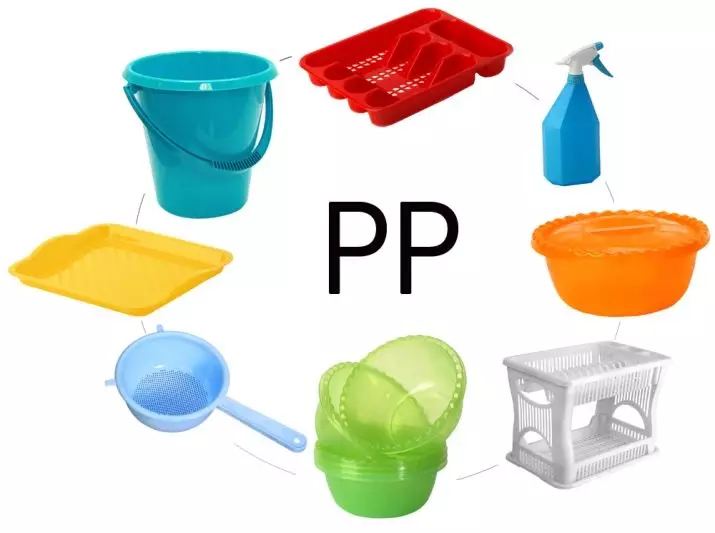
- PET or PETE - polyethylene terephthalate. It is allowed to use products from this plastic in order to pack juices, mineral water, other popular drinks. However, its use remains extremely undesirable, as it can also cause significant health problems.
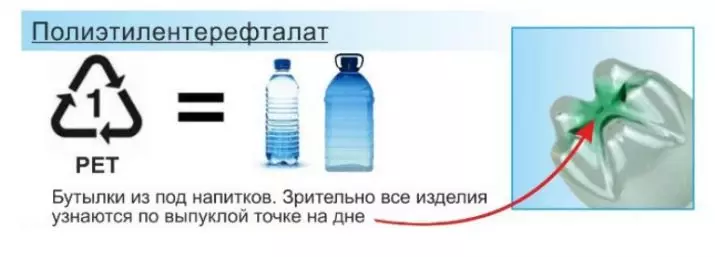
- PEHD or HDPE - elevated polyethylene density. It is most convenient when operating and conditionally can be called safe. From this material are produced flasks, bottles, and sometimes packaging for long-term preservation of dairy products. But even under some conditions, it begins to distinguish the extremely dangerous component - formaldehyde.

- PVC or PVC - polyvinyl chloride. It is prohibited as food packaging, as many very harmful chemical components can be distinguished. Most often out of it makes tanks for storing detergents and other products of the non-tech profile.

- LDPE and PEBD - low-density polyethylene. Produced for packaging of non-spike products, although it is called experts almost safe.

- Other or O - Other . These signs will tell the average man that this plastic cannot be classified under the one above. Usually refers to one of the safest species (conditional) for people.

Disposable non-toxic plastic devices are most often indicated by numbers 05 or 1.
Selecting the plastic containers, it is worth familiar with the decoding of markers in advance. On any plastic product must be present a special badge, which will tell, from which particular material is the goods are released. If there are no badges on the product at all, then in no case should you buy it. For example, if digits stand on the bottom of the dishes in the triangle icon or there are letters PVC is a signal for you that this kind of packaging is extremely poisonous.
Any popular plastic container today should have its own special designation. It all depends on the type of marking, which can be distinguished not very dangerous and extremely toxic to human health material.
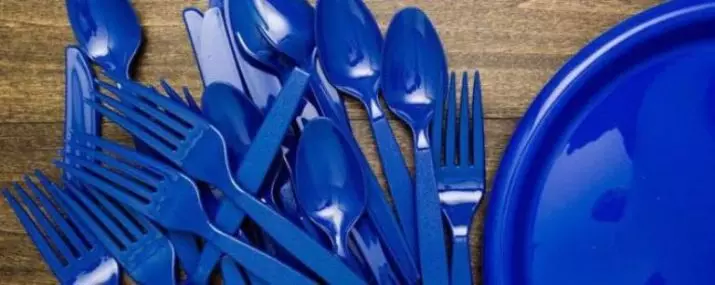
On one-time dishes will always stand a sign in the form of a small triangle, which consists of 3 arrows. Inside this triangle indicates numbers from 1 to 7. Consider what each of the numbers means.
- Figure 1 (PET) Tell the buyer that this container should be applied only once. This marking is familiar to one-time container (bottles) of plastic. It is categorically prohibited to use them for the second time.
- Figure 2 (PEVD) - Since this polyethylene has an increased density, it is often used again, although its degree of security is considered conditional.
- Figure 3 (PVC) - Selects for release of packaging from the film. Extremely toxic material capable of combustion to highlight poisonous components.
- Figure 4 (Pand) - Suitable for the release of various polyethylene packages. It can safely apply the second time, since almost does not interact with food.
- Figure 5 (PP) - polypropylene. Great for multiple operation is performed for the production of food containers.
- Figure 6 (PS) - This is a foam, which manufacturers are used as an additive in a mixture for the release of covers for cups of disposable applications.
- Number 7 or other - absolutely not suitable for the food industry, as they can cause severe diseases.

Icons meaning methods of cooking
The labeling of the dishes suitable for safe warm-up in the microwave is always put on the product itself and it usually looks like several times the decreased pattern of the electrical apparer with a plate, which is placed inside it.
If you saw the number 6 on the product, concluded in the sign of the triangle from the 3-arrows, and the PS letters are at the bottom, then this means that you have a polystyrene dishes. This kind of product in no case should be used for hot dishes, It is forbidden to put pressure on the microwave. The whole problem is that if you still warm up the food in such a form of plastic, it can be seriously poisoned, since during the even minimal heating, the polystyrene will allocate extremely dangerous toxins.
A secure option can be called a special plastic dishes for a microwave oven. Before purchasing capacity, you should pay attention to the presence of a special stamp, which is usually located on the bottom or a container cover. The special plastic dishes for the microwave oven with a combination of letters - PP and PC is denoted, and in addition, a thematic sign in the form of small waves or a drawing of a microwave oven should be on the container.
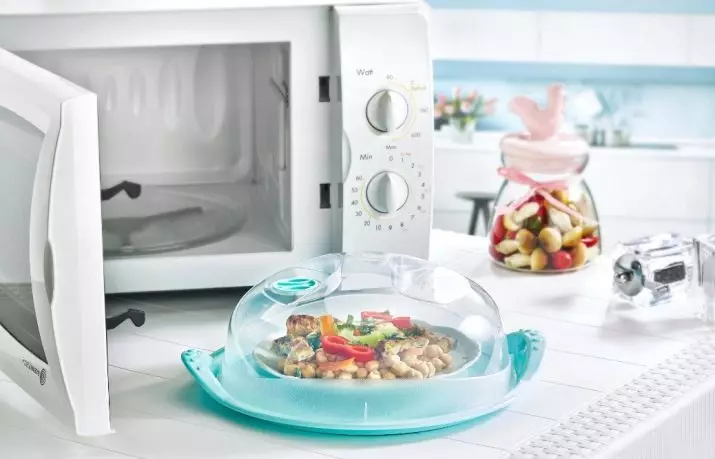
It should also be known that Capacities that are bought specifically for a microwave, should not be very much or sharply hot, especially if they have just been taken out of the refrigerator. An exception can be only special plastic containers, in which you can heal the dishes immediately as soon as they were taken from the refrigerator.
Signs that denote the nuances of operation
Sometimes on the disposable dishes you can see a number of pretty busy icons, the value of which is not always clear.Sign "Glass-fork"
This icon is often found in various types of products and means literally the following:
- This kind of product is released from non-toxic material;
- can be used for storing different types of food;
- All these materials are completely safe.
This icon can be seen even on certain types of household appliances.
The "Glass-fork" symbol is most often put on plastic to reflect for the buyer information about the shelf life of the acquired product for direct and safe contact with different products used in the forest. But if this icon will be emphasized, it means that products should not come into contact with food.
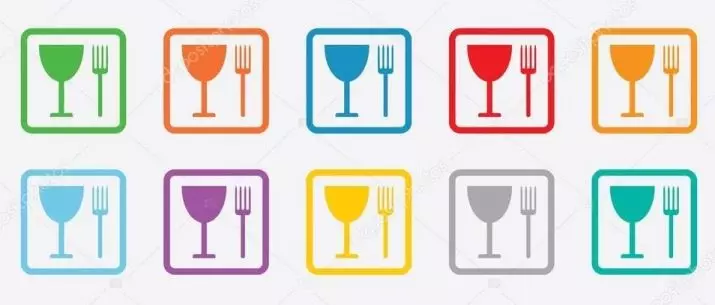
Green Dot Sign
This kind of noticeable icon can be put on its own products only by those brands that finance the German environmentally friendly processing program - ECO EMBALLAGE and is included in its complete disposal system.
Many companies producing plastic products are not included in this system, but this icon is nevertheless anyway on their products put that we can consider an obvious attempt to mislead buyers about the ecological component of the goods.

Sign "Secondary Recycled Material"
The goods released for the second time from recycled materials or something suitable for current processing. The triangle icon on the package consisting of 3 arrows means that this kind of dishes is released from the secondary.
Inside the triangle itself, well-read readable numbers will most often be. They will talk about a specific type of processing. So, if you see the digit, then it will be:
- from 1 to 19 - plastic;
- from 20 to 39 - paper or cardboard;
- from 40 to 49 - metal;
- from 50 to 59 - wood;
- from 60 to 69 - fabric or textiles;
- from 70 to 79 - glass.

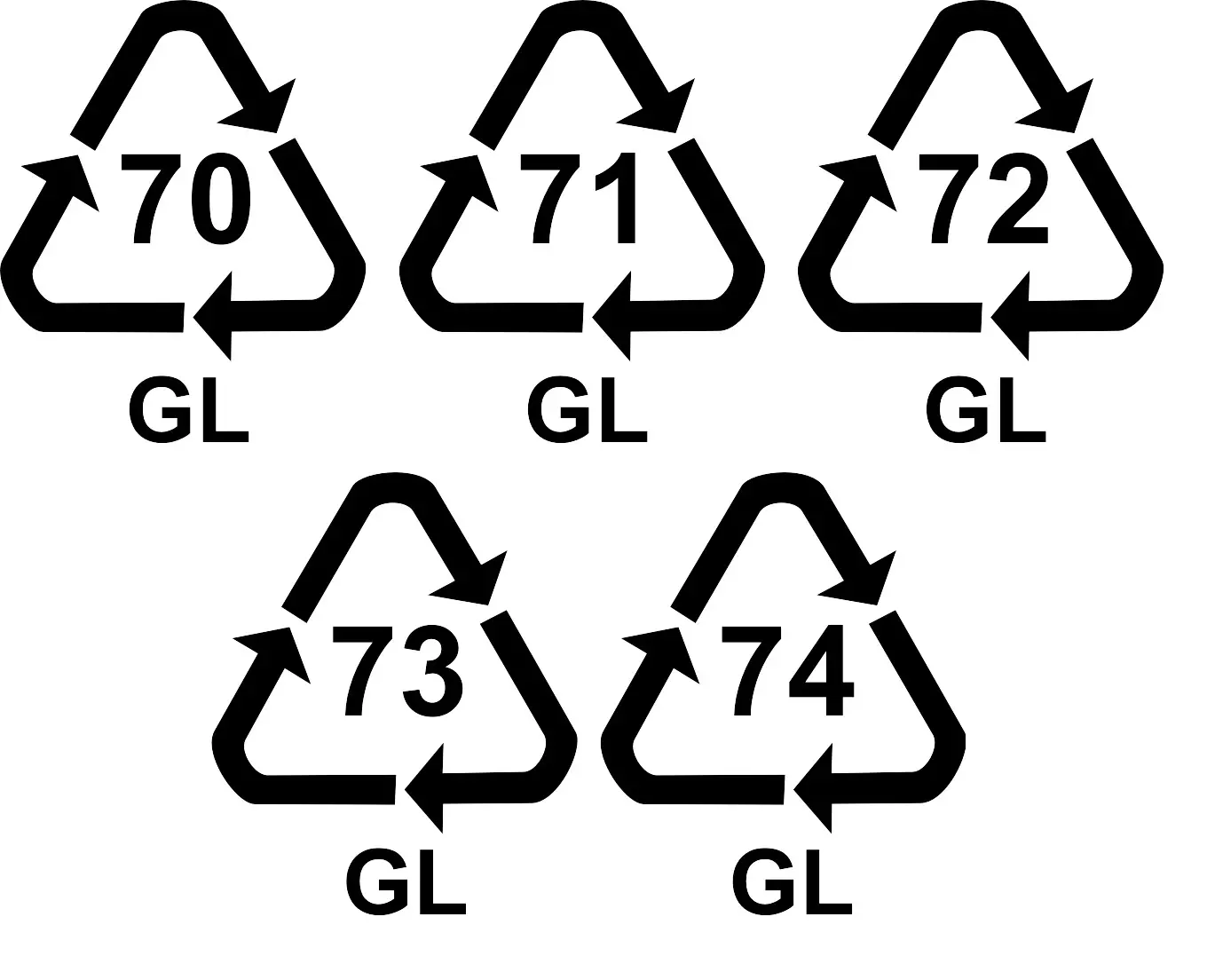
True, it is worth knowing that the use of this sign is not under control, so it will be able to put it on its products who wants it, and therefore, in practice, this sign can absolutely not have a semantic load.
Designation of other signs found on plastic dishes
- Microwave overtaken - Such dishes can not be heated in it;
- Two alternately rotating arrows - This product cannot be used for the second time;
- Plate and spoon crossed - not suitable for hot food;
- Listed refrigerator - Do not put in the refrigerator;
- crocheted dish - can not pour fat;
- Image of a thermometer - can withstand temperature differences.
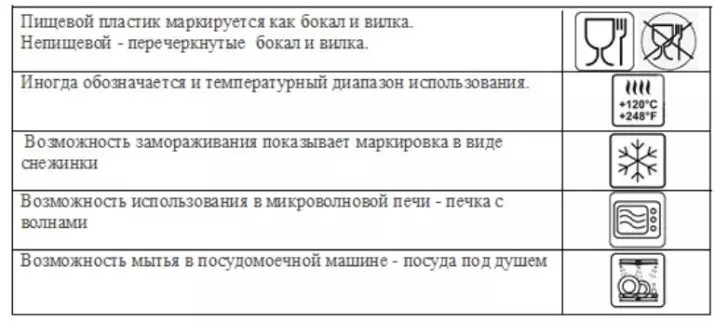
In any case, even using almost safe types of plastic dishes, think about whether you should not go in daily use to more traditional materials, the thousand-year history of which confirms their benefit to human health.
Read more about what is marked on plastic dishes, see the following video.
